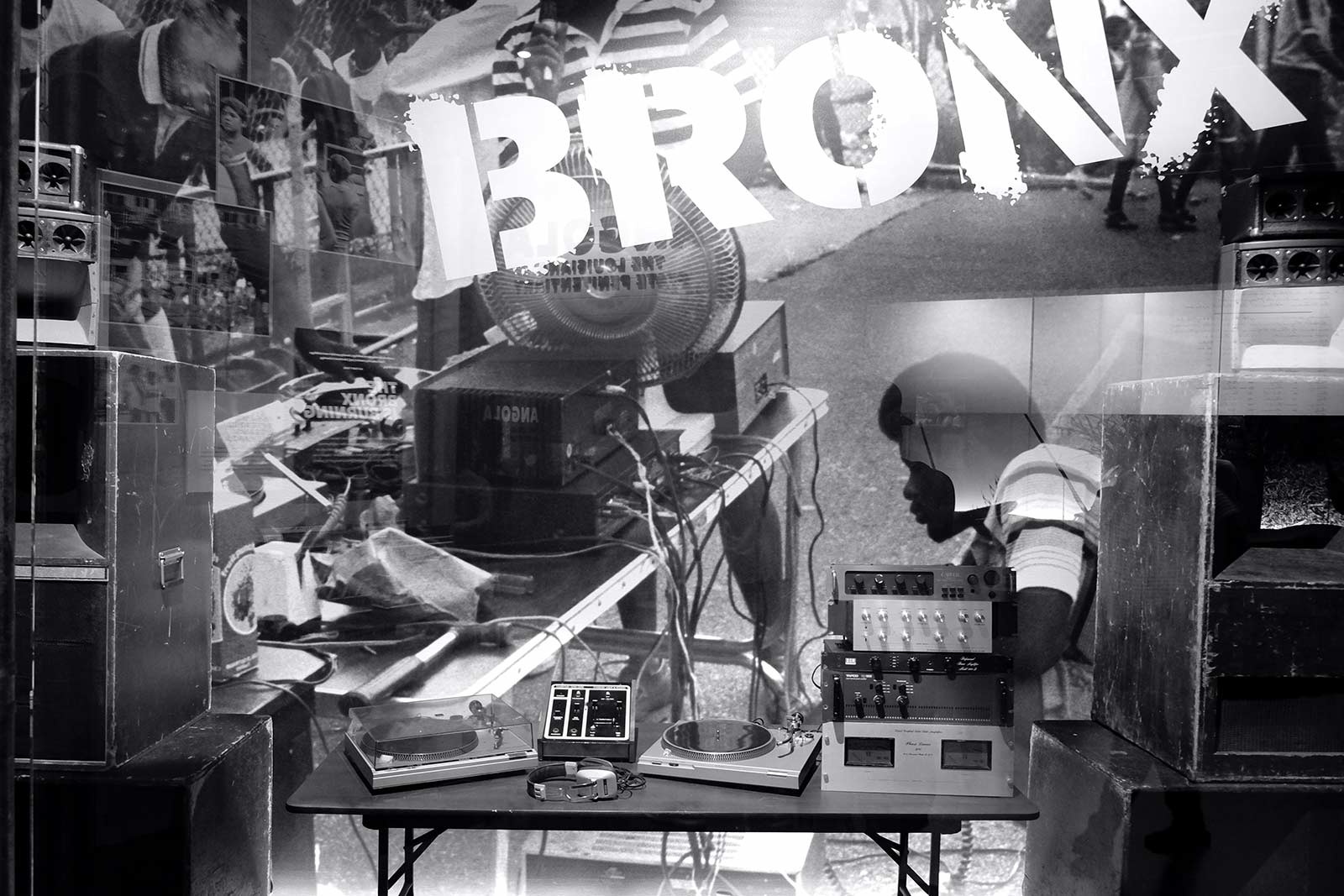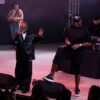On August 11 1973, DJ Kool Herc and his sister Cindy threw the now legendary Back To School jam in the recreation room of 1520 Sedgewick Avenue in The Bronx, New York.
Herc’s party represented a coming together of music and the start of something new. The Bronx crowd did not want the dancehall sounds Herc had begun to play. They wanted soul and the tough percussion of funk. So, Herc changed up the sound and used the main switch for the lights like a strobe-light to add atmosphere. Little did they know, that his event would be commonly accepted by the hip-hop fraternity worldwide as the starting point of what was to become one of the most important creative movements of the last century.
This year, members of the hip-hop community, spanning several generations, will be celebrating the core elements of hip-hop culture: graffiti, breaking (or breakdancing), DJing and rapping that have thrived in the last 50 years.
Although 1973 is recognised as the year that gave birth to hip-hop, it was not until 1979 that the first rap records connected to hip-hop culture were recorded. Fatback’s King Tim III (Personality Jock) arrived in the spring of that year followed by Sugarhill Gang’s Rapper’s Delight in the late summer. Over the next three years, a swathe of disco-oriented rap records followed, solidifying hip-hop culture through the medium of vinyl.
Hip-hop’s development
The six years between 1973 and 1979 are hugely significant to hip-hop’s development. Grandmaster Flash, DJ Mean Gene, GrandWizzard Theodore, DJ Breakout and DJ Baron from The Brothers Disco], Afrika Bambaataa and Kool Herc were each pioneering hip-hop jams in their respective Bronx neighbourhoods. MCs and rappers, such as Coke La Rock, Grandmaster Caz and M.C. G.L.O.B.E., also developed rap styles.
Breakers were also progressing breaking moves, styles and forms of dance in response to the breakbeat – the parts of the record where rhythm and percussion takes over. Kool Herc developed the Merry-Go-Round, a method of continuing the break by utilising two copies of the same record, thus providing a music space where breakers could dance longer and in more creative ways.
While all of this thrived in the US, it was almost a decade until hip-hop culture reached other shores.
The Sugarhill Gang’s Rapper’s Delight and Kurtis Blow’s Christmas Rappin’ (1980) were chart hits overseas. Hip-hop’s identity was transported globally, however, by the visuals in punk impressario Malcolm McLaren and World’s Famous Supreme Team’s Buffalo Gals music video. It was also helped by The New York City Rap Tour in 1982.
Message making
Throughout its history, hip-hop has been accused of not producing proper music. Its early incarnations of rhymes over records and studio band cover versions of funk and disco jams to programmed drum machine and digital sampling did not sit comfortably with the canon of 20th-century music.
MCs were charged with rapping because they couldn’t sing. Breaking was labelled passing fad that kids would grow out of, like yoyoing or jumping on pogo sticks. Hip-hop challenged the norms of mainstream music. Yet, here we are, rejoicing in a cultural movement which continues to develop.
Hip-hop’s significance is multifaceted, but one of the most important things about it is its ability to foster confidence, self-expression and forms of identity for its participants. Through the practices of the elements, hip-hop adopters learn new ways of making art. Formal education in visual art, dance and music is uneeded, it is not necessary to own musical instruments or have access to a dance or art studio.
Aspiring hip-hop artists learn from each other and the ethos of “each one teach one” – adapted from the African American proverb – applies across the culture. Relating to ideas of identity, hip-hop also brings teachings of Black history – histories that were traditionally not taught through conventional western school curriculum. This is often referred to as hip-hop’s fifth element.
In the late 80s, Public Enemy and the Native Tongues collective brought a level of social consciousness to rap music, but hip-hop has always maintained a political and critical edge. Brother D’s How We Gonna Make The Black Nation Rise? from 1980 is perhaps the clearest example:
My people, people, people, can’t you see
What’s really goin’ on?
Unemployment’s high, the housing’s bad
And the schools are teaching wrong
Cancer from the water, pollution in the air
But you’re partying hard, like you just don’t care
But the more well-known Melle Mel recording with Grandmaster Flash and The Furious Five took socially conscious lyrics to the mainstream with songs like New York, New York and The Message (cowritten with Duke Bootee).
The rise of socially-conscious hip-hop was crucial for listeners. Chuck D, his group Public enemy, and others like Grandmaster Flash and The Furious Five, made lyrical references to political Black figures such as Louis Farrakhan, Malcolm X and Martin Luther King.
Hip-hop has always produced a counter-narrative to the mainstream, staying true to its underground ethos. You can hear it in the music of superstars like Kanye West whose early career lyrics keenly described American racial inequality. Take the song Never Let me Down off his debut album The College Dropout, where he raps about how his grandparents fought for civil rights, adding:
Racism still alive, they just be concealing it
Many of today’s rappers are also still using the form to expose inequality. Popular artists like Kendrick Lamar and Travis Scott are telling evocative stories about racism, generational trauma, inequality and a broken culture. These mainstream artists are cut from the same cloth as the more underground rappers like Roughneck Jihad and Worms Ali.
With history 50 years deep and its continuing innovations, hip-hop can and should remain at the forefront of these conversations for the next 50 years.
Written by Adam de Paor-Evans, Research Lead at Rhythm Obscura, University of Plymouth
This article is republished from The Conversation under a Creative Commons license. Read the original article.
![]()
5 Ways to Support HipHopCanada:
- Submit Your Music
- Follow Canadian Fresh (HipHopCanada’s Spotify Playlist)
- Follow us on Instagram
- Follow us on X (Twitter)
- Like us on Facebook














































